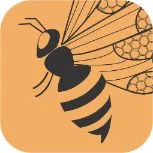What is Bee Honey? A Comprehensive Details about Bee Honey
Honey is a sweet viscous liquid substance made by the honey bees. It is a great source of fructose and glucose and is produced by the bees from the nectar collected by various flowers. Nectar is a mixture of water, sucrose, glucose and fructose which is converted into honey by the enzymes present in the body of honey bees.
Raw honey comes directly from a bee colony. Some honey makers go the substance through a coarse channel to eliminate unfamiliar matter, however it stays natural food. The majority of the honey sold in stores goes through a processing cycle to make it less tacky and simpler to filter.
High temperatures pasteurize honey and obliterate yeast cells in it that can cause undesirable aging.
Honey is essentially sugar. It is really higher in calories than the ordinary white sugar utilized for cooking or preparing. Since it is better, you may require it in less quantities as a sugar substitute. Likewise, honey adds flavor that white sugar doesn't have.
One tablespoon of honey contains:
- Calories: 64
- Protein: 0 grams
- Fat: 0 grams
- Starches: 17 grams
- Fiber: 0 grams
- Sugar: 17 grams
Apart from this, honey contains a few nutrients and minerals in following amounts, including limited quantities of:
- Iron
- Zinc
- Potassium

Raw honey comes straight from the hive and has not been involved in any processing methods which keeps all its nutrition or health benefits intact. However, some researchers have also found that processing of the honey does not affect honey's nutritional value or antioxidant levels.
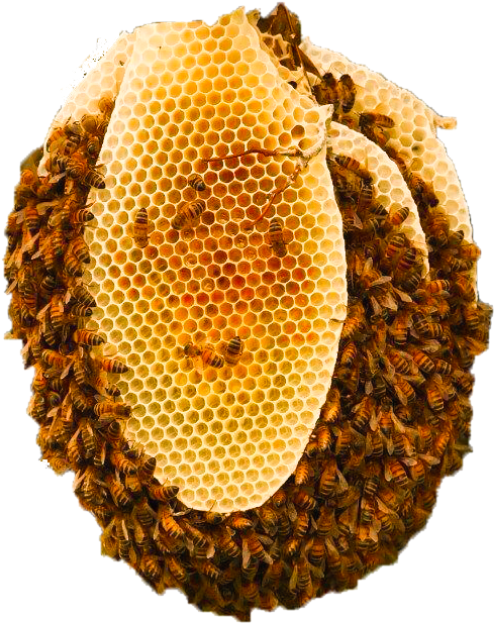
How Bee Honey is Made?
Honey bees visit millions of flowers in their short life-span to look for the nectar. When they find a good nectar source they stop at the flower and gather the sweet liquid nectar. This nectar is stored in an exceptional sac called a honey crop, where enzymes separate it into simple sugars. Back at the hive, different honey bees move the nectar into honeycombs. They spread it over the cells, making a breeze that dries out the nectar until it gets nectar, and afterward seals the cells with wax. Honey bees visit 2 million blossoms to make a pound of nectar.
Honey bees need two types of food. One is honey produced using nectar, the sweet squeeze that gathers in the core of the blossoms. The other comes from the anthers of blossoms, which contain various little grains called pollen. Similarly, as blossoms have various tones, so does their pollen.
Most honey bees assemble just pollen or nectar. As it sucks the nectar from the blossom, it is put away in her honey stomach which is transferred to the honey-making bees in the hive. When the bee is hungry, it opens a valve in the nectar "sac" and a part of the payload goes through to her own stomach to be changed over to energy for her own necessities.
The honey bee is a sublime flying machine. It can convey a payload of nectar or pollen equal to its body weight. Consider that even the most developed plane can just take off with a heap one-fourth of its own weight and you'll see the value in the marvel that the honey bee can stay airborne with such a heap.
When the nectar "sacs" are full, the honey bee gets back to the hive. Honey is delivered to one of the honey bees and is then passed mouth-to-mouth from one honey bee to another until it's dampness content is diminished from about 70% to 20%. This progressions the nectar into honey. Sometimes the nectar is stored without a moment's delay in cells in the honeycomb before transferring it mouth-to-mouth working since some evaporation is brought about by the 32.5°C temperature inside the hive.
Finally, the nectar is stored away in cells and covered with beeswax in preparation for the arrival of infant honey bees. Pollen is blended in with nectar to make "honey bee bread" and is fed to the hatchlings. A baby bee needs food wealthy in protein if the honey bee local community needs to prosper.
Prior to getting back to the bloom again for more pollen, the honey bee brushes, cleans and really focuses on herself ? Not on the grounds that she is vain yet so she can work all the more proficiently. For the duration of her life cycle, the honey bee will work vigorously gathering pollen, taking it back to the hive, cleaning herself, then, at that point setting out for more nectar and pollen.
Forager honey bees begin from the hive for bloom patches right after attaining the age of three weeks. As they live for just six or seven weeks, they have a lot of work to do and a brief period in which to do it.
There will be numerous different honey bees working simultaneously, and the air will be loud with their rambling. It takes 300 honey bees around three weeks to accumulate 450 g of nectar. Overall, a hive contains 40,000 honey bees.
Bee collects excessive quantities of nectar throughout the summers and produces honey from it. This large amount of honey is collected to ensure that bees can consume it during colder months when they don't go out to collect nectar. Bee honey is the source of energy for the bees, that helps them in vibrating their body, creating heat and keeping the hive warm. It is very interesting to know that only 2 tablespoons of this natural sweetener is enough for the bee to sustain flight around the world.
How Bee honey is harvested?
When the honeycomb in the hive is loaded up with nectar and covered with beeswax, it is the time to harvest bee honey. Beekeepers consistently assess their hives to see when the honeycomb can be taken out. Honeycomb is eliminated from the hive and taken to a portable extracting van or central extracting plant called a "honey house". The wax cappings are taken out with a steam warmed blade or exceptional spinning cutting blade before the honeycomb is put in the extractor. The honeycomb is then positioned in rotating bins where the turning development tosses out the nectar by divergent power.
Almost no harm is done to the fragile honeycomb by this interaction and when it is gotten back to the hive, the honey bees quickly set about eliminating any left-over nectar in addition to fixing and cleaning every cell in status for another load of honey. Nectar gathered from the extractor is then stressed and left to remain until air bubbles rise. Air pockets and any left-over wax particles are skimmed from the surface and the honey is prepared for packaging. It genuinely is directly from Nature's storage facility! Most apiarists (beekeepers) send their honey in mass to packing houses. Some have their own packaging equipment and offer the honey to retail and discount stores.
.png)
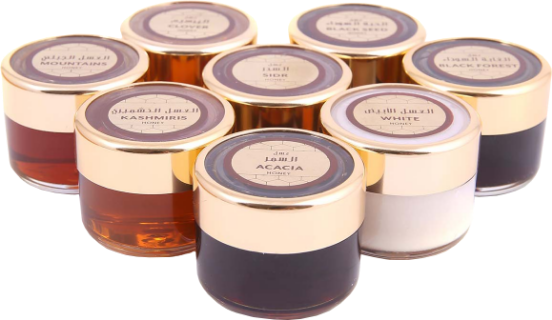
Varieties of Bee Honey
The flavor, shading, texture and fragrance of honey relies upon which plants the honey bees accumulated nectar from. Blueberry blossom honey is made with the nectar from blueberry blooms, is dull golden in shading, and has an aftertaste like brown sugar. Raspberry blossom honey is additional light in shading with a slight fruity taste, and buckwheat honey is practically dark in shading with an exciting, impactful aroma and flavor. For the most part, a dull honey will have a higher wholesome substance than a light nectar.
There are many blossoming plants on the planet that produce nectar, along these lines giving the possibility to have many sorts of honey. Wildflower honey addresses a mix of blooming plants, and differs in shading and flavor contingent upon locale and season.
Bee Honey as Currency
In the 11th century, honey was considered a high-valued commodity. During those times lords of German forced their peasants to make the payments in honey. It was the most sought-after natural ingredient that was used in sweetening beers.
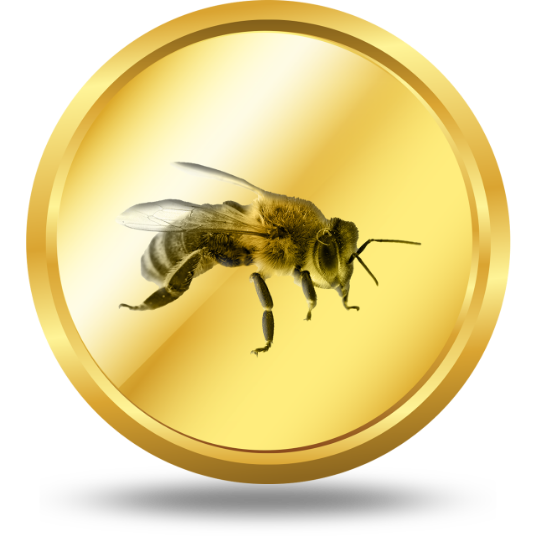
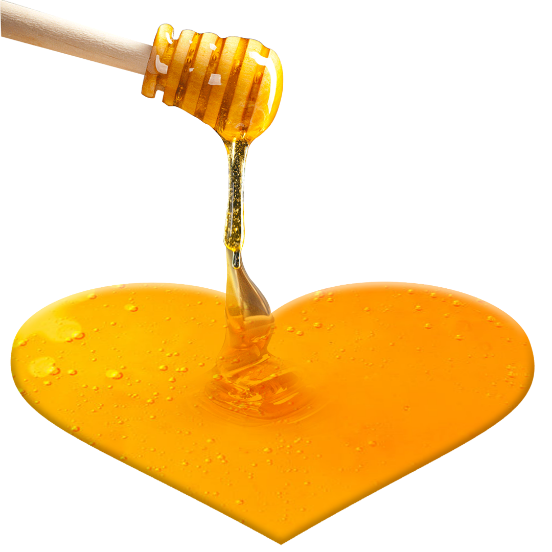
What Are the Health Benefits of Bee Honey?
-
Anti-inflammatory Effects
Honey contains antioxidants, which can shield the body from inflammation and other types of diseases. Inflammation can prompt an assortment of medical problems, including coronary illness, disease, and immune system issues. One study found that antioxidants in bee honey were distinguishable in blood plasma, showing that eating honey could improve cell reinforcement action in the body.
-
Relieves Cough & Cold Symptoms
Over-the-counter medications are generally not preferred to treat children’s coughs and colds. Parents are therefore advised to follow home remedies and honey proves to be beneficial in this case. It has been proved that consuming two teaspoons of honey offers great relief in nighttime cough and allows better sleep. However, doctors never recommend this remedy for children less than a year old as this might lead to infant botulism.
-
Enhances Sleep Quality
Bee honey proves to be advantageous in enhancing the quality of sleep. Honey releases serotonin which is converted into melatonin by the body that helps in regulating the length and quality of sleep. It is recommended to add a teaspoon of honey into a glass of milk and consume it before bedtime. This will help greatly in relaxing your mind and make you fall asleep quickly.
-
Improves Body Immunity
Bee honey is rich in antibacterial and antioxidant properties which aid in improving the functioning of the digestive system which in turn strengthens the immune system. It is good to start the day with a cup of warm water mixed with a spoonful of honey and lemon juice. This not only helps in detoxing the body but provides heaps of benefits for the digestive and immune system.
-
Treats Wounds and Burns
Honey is made up of fructose and glucose mainly which acts greatly in absorbing water from the wounds. Topical application of honey promotes well in healing wounds, and curing cuts and burns. The rich antiseptic properties of honey inhibit bacterial growth and prevent wounds from getting infected further.
-
Assists in Weight Loss
Drinking warm water with honey and a splash of lime first thing in the morning is a powerful way to enhance body digestion. As honey helps in controlling hunger, starting the day with it can help you shed those extra pounds effectively. You can even supplant all refined sugar in your eating routine with honey to rebalance the mind signal that propels you to devour all the more sweet stuff.
-
Helps in Maintaining Skin Health
Honey is a phenomenal moisturizer and does something amazing for patches of dry skin. You can utilize it to mellow your knees and elbows, even dried lips. During the cold weather months, simply take some honey onto your face and wash off after 30 minutes. You can even make a saturating scour - you should simply add some sugar! It's anything but a natural exfoliator. Give your skin the advantage of honey’s incredible cell reinforcement, calming and ultra-saturating properties.
-
Removes Dandruff from Hair
Honey brings great relief in dandruff. Applying a hair mask of honey on the scalp and leaving it for sometime greatly helps in reducing dandruff and minimizes hair loss also.
-
Makes Hair Silky & Shiny
Honey goes about as a characteristic specialist for saturating hair and purifying the scalp, leaving you with silk smooth hair without stripping endlessly any normal oils. Add a teaspoonful of honey to your typical cleanser or blend in with olive oil for a profound molding treatment for 20 minutes, prior to washing your hair with cleanser.
-
Helps in Preventing Heart Diseases
Consumption of natural honey daily helps greatly in reducing the risk of coronary illness. Antioxidants present in honey lower the body cholesterol and keep up the cardiovascular health.
Risks of Consuming Honey
Honey is a protected nourishment for a great many people, yet not for all. Here are some possible dangers of eating honey, including raw honey:
-
Botulism in Infants
You ought not offer nectar to newborn children who are below one year of age. Honey contains pollen particles that may convey spores of the microscopic organisms that cause botulism. Newborn children need protection from numerous germs, and they could become ill. Utilizing honey in preparing nourishment for youngsters ought to be protected, as warmth annihilates most microorganisms.
-
Sensitivities
The individuals who are inclined to hypersensitivities ought to be cautious about eating honey. Although these allergies are uncommon, they do happen. Maybe this is because of honey bee pollen in the nectar. Honey bee dust is a combination of pollen and stomach related proteins from honey bees. It's anything but a significant unfavorably susceptible response.
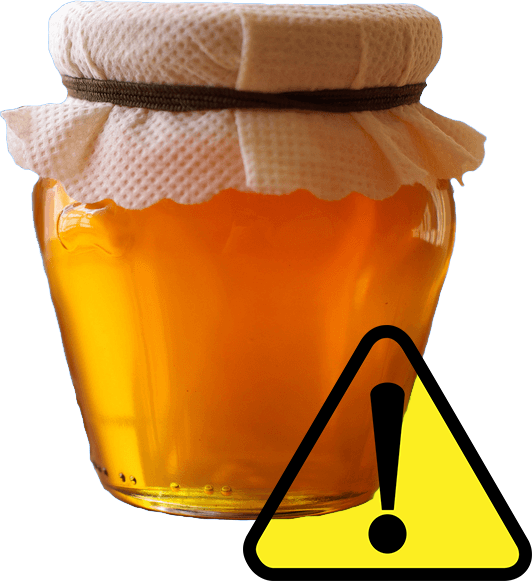
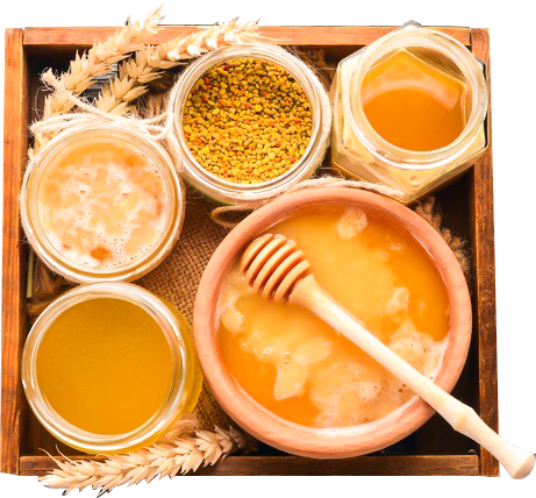
What are the By-Products of Bee Honey?
-
Beeswax
Beeswax is created in the honey bee's body as the nectar is changing into honey. The honey bee removes the wax through organs in its mid-region. The province utilizes the wax to cover the filled honeycomb cells. It is rejected off the honeycomb by the beekeeper and can be offered to the commercial market for use in the creation of medications, beautifiers, furniture polish, craftsmanship materials, and candles.
-
Bee pollen
Bee pollen sticks on the working drone's legs as it gathers blossom nectar. Since pollen contains a lot of nutrient B12 and nutrient E, and has a higher level of protein than meat, it is considered exceptionally nutritious and is utilized for dietary enhancement. To gather it, the beekeeper will force the honey bees through a pollen trap—an opening screened with five-network equipment material or a 0.1875-in (0.476-cm) width perforated metal plate. The single-or twofold screened opening permits the pollen to drop from the honey bees' legs as they fly through. The dust drops into a holder and is promptly dried and put away.
-
Royal jelly
Royal jelly is a smooth fluid created and discharged by the nurse honey bees to take care of the queen. Supplement rich with proteins, amino acids, unsaturated fats, sugars, nutrients, and minerals, it is esteemed as a skin item and as a dietary enhancement. It is believed to offer great skin benefits, builds energy, and helps to lessen tension, restlessness, and cognitive dec
-
Propolis
Propolis is plant resin collected by the honey bees from the buds of plants and afterward blended in with chemicals, wax and pollen. Honey bees use it as a disinfectant, to cover breaks in the hive, and to diminish the hive opening throughout the cold weather months. Financially it is utilized as a sanitizer, to treat corns, retreating gums, and upper respiratory sickness, and to stain violins.
What is Bee Honey Crystallization?
Crystallization is the formation of monohydrate glucose crystal stones from a super-immersed sugar solution (ie.honey).
Crystallization rate increases with -
- Lower water content
- Higher glucose content
- Presence of strong particles (ie. pollen grains and crystals of honey)
- Temperature near to 14 C (Temperatures over 28 C and under 5 C outcome in exceptionally lethargic crystallization)
- Blending
Note that the more slow crystallization produces bigger and more sporadic crystals.
Crystallization of honey is totally normal and doesn't harm the quality of honey. By and large the crystallization process can be turned around by tenderly warming the nectar to "liquefy" the crystals.
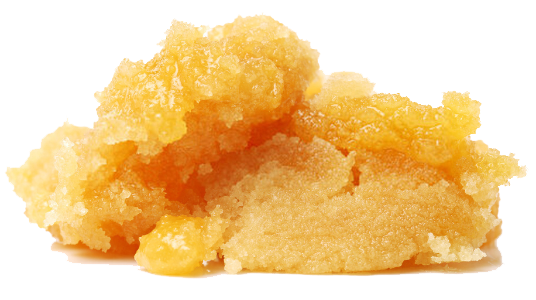
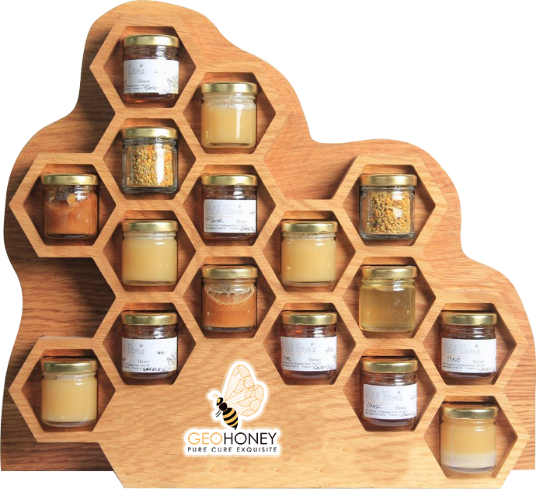
How to Store Honey?
Honey is a robust natural ingredient which when stored properly can last for years. However, the quality of honey can sometimes damage because of the following factors -
-
Excessive Moisture
Preferably the dampness content of honey ought to be under 17.8%. If the dampness content is excessively high, say more noteworthy than 20%, the honey may ferment because of yeasts in the honey. Since it is hygroscopic, it will draw in dampness from the air if not stored in a properly sealed container.
-
Excessive Heat
Honey loses a large number of its medical advantages with the mix of heat and time. Coming up next is a dependable guideline storage time versus temperature to hold the majority of its medical advantages
- 40 C for 30 days
- 30 C for a half year
- 20 C for 5 years
- 10 C for 30 years
-
Exposure to Sunlight
Honey can lose its natural benefits when it is exposed to sunlight for prolonged time. Always keep honey in a dry and cool place to use it for years.
-
Presence of Noxious Elements in Environment
As honey is hygroscopic, it has the ability to take odour from its environment. If stored in metal containers, it leads to dissolving metal because of its acidic nature. Thus, it is always suggested to keep honey in glass or plastic containers.
Nectar should be kept available for some reasons including cooking, baking tea-drinking, restorative recipes, and for improving overall health. It is an incredible blessing though for loved ones and friends. Honey jars available at Geohoney can be adorned with strips and embellishments for any event – birthday celebrations, commemorations, and housewarmings. Make certain to store nectar in a cool, dry spot out of direct daylight. Honey doesn't need refrigeration and can be stored easily at room temperature. It is hard to effectively freeze honey on the grounds that there is sufficient water. Taste as many honey types as you can, as it will not only keep you fit and healthy, but also provide lots of other benefits too. When you know about all the benefits, not only will you be able to use it to its best advantage, but you’ll be a honey connoisseur as well!
What’s the buzz, Join the hive !
SIGN UP TO OUR NEWSLETTER
Be the first to know about our hot deals, new arrivals.



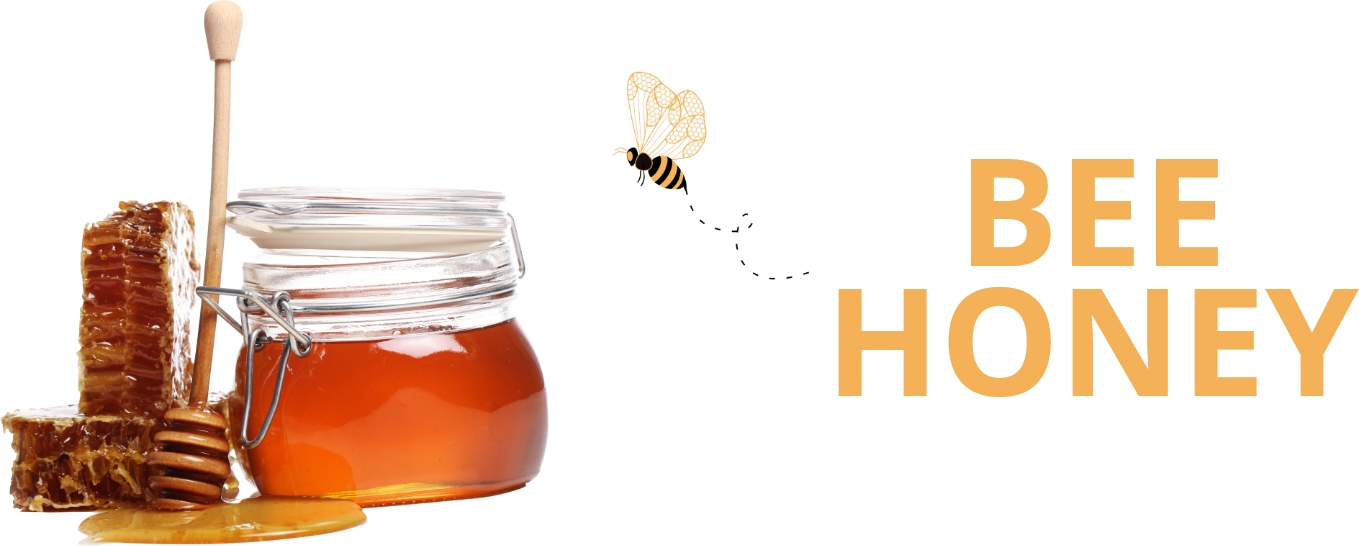


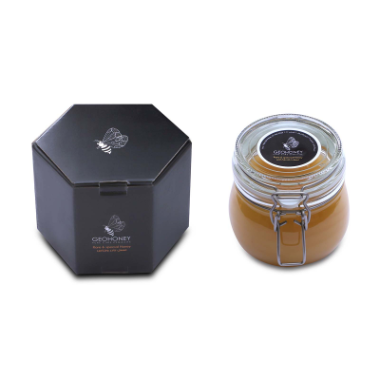



 Pay By Cards
Pay By Cards
 PayPal
PayPal
 Stripe
Stripe
 Other Payment Methods
Other Payment Methods







